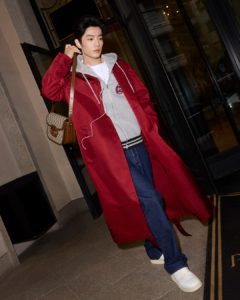In the past, luxury goods were considered a symbol of status, and people were willing to spend a huge amount of money to purchase these luxury goods, in order to gain a higher sense of class identity. However, with social progress and the improvement of people’s values, consumers began to value practicality and quality, and the symbolic meaning between luxury goods and class was weakened.
Regarding the cooling of the luxury goods market, some analysts believe that the slowdown in global economic growth leading to a decline in consumer purchasing power is one of the important reasons, but the more fundamental change comes from a shift in consumer mentality.
Some argue that the anti cyclical nature of luxury goods does not exist, but rather is slower than the pace of economic fluctuations. In the first year of the global financial crisis in 2007, luxury goods sales had almost no negative impact, but in the fourth quarter of 2008, there was a significant slowdown in the watch and jewelry category. Today’s luxury brand performance has been continuously rising during the pandemic for three years, but has suddenly suffered a Waterloo after the pandemic.
Another analyst bluntly stated that the biggest issue in the overall slowdown of industry growth is not how luxury brands will develop in the fourth quarter, but what potential challenges they will face in 2024. The Bernstein report points out that rising interest rates, geopolitical tensions, and the US presidential election may all hinder the recovery of the luxury goods industry.
Such indiscriminate performance sends a signal that “unsold” is becoming the norm in the luxury goods industry. Bernstein analysts wrote in a research report that luxury spending may experience several years of decline before rebounding after the post pandemic frenzy.
Due to the cautious attitude of the capital market, LVMH’s stock price has fallen by nearly 9% in the first three weeks of 2024, with a market value decrease of 37.4 billion euros to 332 billion euros. Kaiyun Group’s stock price has fallen by nearly 11%, with a market value decrease of 6.3 billion euros to 43.1 billion euros. The total market value of the two has evaporated by more than 43 billion euros, equivalent to approximately 337.5 billion yuan.
JPMorgan Chase and Morgan Stanley downgraded LVMH’s rating to a neutral position in early January, and HSBC simply abandoned all price targets set for it. Kaiyun Group is also struggling, with Citigroup analysts pointing out that its core brand Gucci is still in a transitional stage, and other brands such as Saint Laurent and BV have not yet improved their competitiveness, facing the risk of profitability pressure in 2024.
Cartier’s parent company, Lifen Group, is cautious about its quarterly performance as of March 31. Chief Financial Officer Burkhart Grund stated in a conference call after the financial report that there are macroeconomic issues and it will take approximately two more years for the Chinese market to fully recover.
The top luxury brands, which play an important role in stabilizing the sea, are also trapped in a slowdown in performance growth.
Last Tuesday, Hugo Boss’s stock price plummeted by 11%, the highest drop since March 2020, as its fourth quarter pre tax profit did not meet analysts’ average expectations of 129 million euros. Due to luxury brands generally increasing their promotional efforts during the holiday season, Hugo Boss is also unable to follow up to maintain competitiveness.
Coincidentally, in the three months ending December 30th last year, sales of the British luxury brand Mulberry fell by 1.5% year-on-year, but increased by 0.6% in real terms at a fixed exchange rate. The brand admits that the company is facing a difficult period, with overall revenue performance affected by the sluggish economic environment and a decline in luxury consumption spending.
According to Fashion Business News, due to poor performance during the holiday season, Burberry has once again lowered its profit forecast for the full year of 2024 in just three months, with an expected operating profit of £ 410 million to £ 460 million, compared to the previous £ 552 million to £ 668 million. Affected by this, Burberry’s stock price plummeted by 12% on the same day, marking the largest decline since 2012 and its market value reaching a new low in three years.
In an era of lack of motivation in the market environment, the story of luxury brands cannot be told.
















